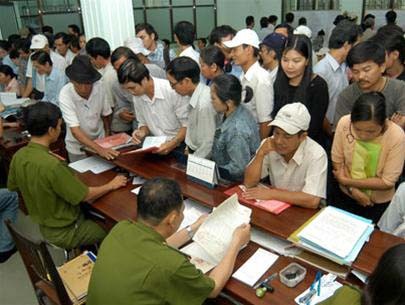Over 2.1 million non-residents are eligible for household registration (ho khau) in more advanced cities and provinces, including Ha Noi and Ho Chi Minh City now that the Residence Law has taken effect. But as it has become easy to move from one place to another, measures are needed to control massive emigration and to ensure social order, security and stability.
Significant differences in living standards between the city and the country have resulted in waves of urban migration, to the point that that up to two-thirds of the populations of some Vietnamese cities are composed of rural migrants.

According to Ho Chi Minh City police, nearly 2 million non-residents now live in the city, of whom 1.5 million are qualified to apply for municipal residence permits.
Four months after the Residence Law came into effect, city police issued residence permits for more than 100,000 non-residents, mostly in such districts as Tan Binh, Tan Phu and Go Vap.
But more population means more need for housing, traffic routes, schools and hospitals while infrastructure development still lags demand and the city is already just barely coping with chronic traffic jams and shortages of hospital beds and school seats.
While the purpose of the Residence Law is to realize the people’s freedom of mobility, municipal authorities must ensure the city can meet basic needs for housing and infrastructure.
There’s no point in issuing a dozen residence permits to people who will have to live in one small house of a few square meters just for the sake of saying they were allowed to move to the city.
To alleviate infrastructural pressures and further deterioration of the quality of life in Viet Nam’s major cities, Ho Chi Minh City and Ha Noi should lead the way in setting population management regulations, such as setting a minimum area of housing for each inhabitant.
Strategic plans for the city’s socio-economic development and infrastructural development should also be carefully mapped out and executed if the city is to allow millions more from the countryside to join the urban migration.
Municipal authorities must also improve crime fighting and take the initiative in creating sufficient jobs to accommodate the impending surge in urban migration likely to follow the Residence Law.








